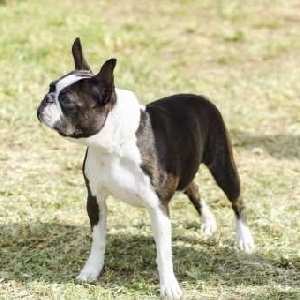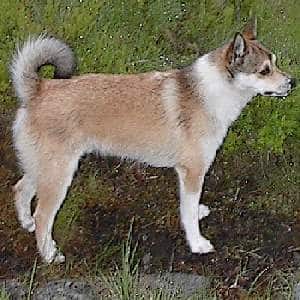The Non Sporting Dog Breeds are hard to categorize or describe. Unlike the other groupings, these dogs don’t seem to fit the normal criteria.
Basically, these dog breeds have not been bred for sporting purposes – retrievers for retrieving shot game birds (ie. Labradors), hunters, maybe for cornering lions (ie. Rhodesian Ridgebacks), or as shepherds (ie. White Swiss Shepherd Dog).
If you have a dog that doesn’t seem to fit into any other category, The American Kennel Club will place it into a group all its own.
What do these dogs have in common?
Well, not much, actually. They aren’t terriers or working dogs. They don’t fall into the group of Sporting or Gun Dogs.
You aren’t going to see them herding sheep or goats.
Some may seem to fall into the Toy group but maybe they didn’t fit the size requirements.
They may have had a job to do at some point in history, but in the 21st century, they are just companions.
People love them because they make great pets and rarely expect them to guard or protect or sniff out drugs or any of the many jobs that dogs still do so well.
The non sporting dog breeds come in all shapes and sizes, from the small Coton de Tulear to the big muscular Bulldog.
There is no way to categorize them by hair type either.
You can find curly coated Poodles, Straight smooth coated Lhasas, sleek short haired Dalmatians and ones with no hair at all (Mexican Hairless or Xoloitcuintli).
AKC currently recognizes 20 breeds with others likely to be added in the coming years.
But it seems that other world kennel clubs have as much trouble grouping these dogs as the AKC.
In some parts of the world, these breeds may be called companions.
Others classify them as the Utility Breeds. Northern Breeds are another grouping used to describe some of these dogs.
The dogs pictured on this page are registered with the American Kennel Club.
The Non-Sporting Dog Breeds
American Dingo (aka Carolina Dog)

Originally from Asia, this breed crossed the Bering Sea land bridge 4,000 years ago, and then made its way south after breeding with Arctic and Alaskan dogs, into North America. Also known as the Carolina Dog, it lived as a feral breed for many years. This is still an unusual breed, but makes an excellent family dog after appropriate socialization.
American Eskimo Dog

The American Eskimo Dog is a smart, affectionate pet that loves to be around its family. They are playful and energetic without being too rambunctious.
These dogs are small enough to live in apartments, so long as they get ample exercise. This being said, they are not best for owners who will not be home for most of the day, as they are prone to separation anxiety and will bark as a result.
Bichon Frise

These dogs are famous for their ability to entertain, having been taught to perform professionally throughout history. Alongside making for great entertainment, these dogs are ideal companions for families.
These dogs love to be near their owners, making for a constant, fluffy companion. However, when they are left by themselves, Bichons tend to get into some trouble.
Whether it be chewing on your shoes or going to the bathroom on your carpet, these dogs are known to misbehave when left alone for too long.
Boston Terrier

The Boston Terrier is a very alert, friendly, overall happy go lucky type of dog. They are very family oriented and do great with children and other pets. This is a very energetic and playful breed of dog, but they actually don’t require a ton of daily exercise, which makes them ideal apartment dogs.
They don’t bark excessively , and if trained properly, will only vocalize when they are playing. Although their exercise requirements are fairly low, they still need a small amount of mental and physical exercise to prevent them from becoming high-strung and anxious.
Bulldog

The English Bulldog, British Bulldog or just simply “Bulldog” as he is often known, is a very affectionate, calm, good natured fellow.
Despite his rather grumpy and slightly fierce appearance, he is one of the gentlest dog breeds in the world. He loves children and will form a strong bond with them. In fact, the Bulldog loves his family so deeply that he is dependent on them for his own happiness.
Chinese Shar-Pei

The Chinese Shar Pei is a defensive and steadfast pal, whose wrinkly skin is a distinguishing trait that catches lots of attention from those who have the opportunity to be within its presence.
If you are searching for a dog to accompany any small children that you may have, then this breed may not be the best choice for you. Although they are playful and compassionate towards their owners, these dogs are known to have an independent character that often attempts to challenge their master’s authority.
Chow Chow

This breed is known to be independent, living alongside its owners like another member of the house. It particularly does not like being pampered, and will dislike the idea of assuming the role of a lap dog.
Chows are notoriously very suspicious of strangers. They will only accept a new person’s presence if they are introduced formally by the owner.
Coton de Tulear

Origins: Madagascar
Size: Small
Grooming: Extensive
Training: Average
Recognition: CKC (Toys), KC (Toys), AKC (Non-Sporting), UKC (Companion), FCI (Group 9)
Dalmatian

The Dalmatian is not particularly common, but this handsome and athletic dog breed is one of the most instantly recognizable in the world, thanks to that white-and-black coat and everyone’s favorite childhood story of 101 Dalmatians!
A Dalmatian will usually get on well with other dogs and pets and also children. They are not particularly territorial nor aggressive, and are very tolerant.
Finnish Spitz

Origins: Finland
Size: Medium to Large
Grooming: Average
Training: Average
Recognition: FCI Group 5, AKC Non-sporting, ANKC Hounds, CKC Hounds, KC (UK) Hound, NZKC Hounds, UKC Northern Breed
French Bulldog

The Frenchie, as they are often called is a breed of small, happy dogs. Their energy exceeds their size, as this dog loves to run and play. These dogs are known for their insatiable desire to hang around people. They are little bundles of fun and great additions to any family they join.
Their protectiveness of their owners comes from the French Bulldog’s somewhat self-centered personality. They love to be the center of attention, and particularly dislike it when they aren’t.
Keeshond

Origins: The Netherlands
Size: Medium
Grooming: Extensive
Training: Easy
Recognition: FCI: Group 5, AKC: Non-sportingA, NKC: Non-sporting, CKC: Non-sporting, KC: Utility, NZKC: Non-sporting, UKC: Northern
Lhasa Apso

Origins: Tibet
Size: Small
Grooming: Time Consuming
Training: Time Consuming
Recognition: FCI: Group 9, AKC: Non-sporting, ANKC: Non-sporting, CKC: Non-sporting, KC: Utility, NZKC: Non-sporting, UKC: Companion
Lowchen

Origins: France/Germany
Size: Small
Grooming: Time Consuming
Training: Time-Consuming
Recognition: FCI: Group 9, AKC: Non-sporting, ANKC: Toys, CKC: Non-sporting, KC: Toys, NZKC: Toys, UKC: Companion
Norwegian Lunderhund

Origins: Norway
Size: Small
Grooming: Average
Training: Time Consuming
Recognition: FCI: Group 5 , AKC: Non-sporting, CKC: Hounds, UKC: Northern Breeds
Poodles

The Poodle is a fascinating and special breed of dog for many different reasons. One of the more prominent characteristics that separate this breed from the rest of the bunch is that they are said to be the only breed that comes in three different sizes!
Standard Poodles are incredibly adaptive and well-rounded, especially when it comes to their character, and if you spend enough time with one, you will quickly see that they have many different sides to them.
Schipperke

Origins: Belgium
Size: Small
Grooming: Easy
Training: Average
Recognition: FCI: Group 1, AKC: Non-sporting, ANKC: Non-sporting, CKC: Non-sporting, KC: Utility, NZKC: Non-sporting, UKC: Companion
Shiba Inu

The Shiba Inu is a compact breed of loyal, determined, and alert dogs. These dogs are well known for their intelligence and are considered one of the most popular breeds in Japan.
The Shiba Inu is also NOT a very hospitable breed. They prefer to be with their own owners, and even then they are independent, and don’t mind being alone.
Tibetan Spaniel

Origins: Tibet
Size: Small
Grooming: Average
Training: Average
Recognition: FCI: Group 9, AKC: Non Sporting, ANKC:Toys, CKC: Utility, KC: Non Sporting, NZKC: Utility, UKC: Companion
Tibetan Terrier

Origins: Tibet
Size: Small to Medium
Grooming: Time Consuming
Training: Average
Recognition: FCI: Group 9, AKC: Non Sporting, ANKC:Toys, CKC: Utility, KC: Non Sporting, NZKC: Utility, UKC: Companion
Xoloitzcuintli

Also called Toy Mexican Hairless
Origins: Mexico
Size: Small or Toy; Miniature and Standard Size
Grooming: Easy
Training: Average
Recognition: FCI: Group 5; AKC: Nonsporting; CKC: Nonsporting; KC: Utility; UKC: Sighthound & Pariah
Other AKC Dog Groupings



